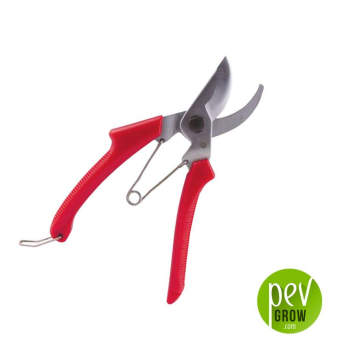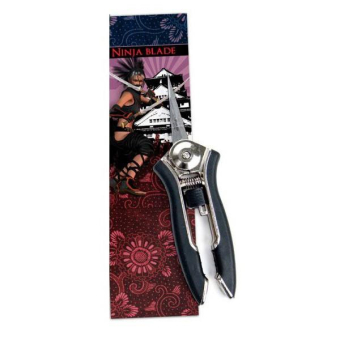

20-10-2023 09:00:27 - Updated: 20 October, 2023
In the exciting world of cannabis cultivation, low pruning or Lollipopping is a crucial technique for optimizing the production and quality of your plants. In this article, we will explore everything related to low pruning, from the right time to carry it out to a comparison with other cannabis pruning. Get ready to delve into the fascinating art of low pruning and boost your cannabis harvests.
⭐ When to Prune Cannabis Low
Low pruning is a technique that should be carried out at specific times in the plant’s life cycle. During the growth phase, it is essential to identify and remove lower shoots that will not receive enough light. In the flowering period, low pruning should be done in the first few weeks to redirect energy towards the main buds.
This cannabis pruning technique is performed to remove those branches or shoots that do not receive enough light, therefore they cannot produce large buds, however they consume energy that the plant could use more effectively to yield more in the high branches that receive more light.
⛳ Low Pruning in Growth
During the growth stage, the cannabis plant develops a large number of low shoots that compete for light. Experts advise performing selective pruning, removing those shoots that are not receiving adequate lighting. This allows energy to focus on vertical growth and upper shoots, promoting more robust plants with larger buds.
There is no need to start too early, but after 3 or 4 weeks of vegetative growth you can already see the structure of the plants and determine which may be the low branches that can be pruned to improve the final yield. This pruning can be combined with other techniques such as FIM pruning or apical pruning in marijuana.
✨ Low Pruning in Flowering in indoor cultivation
In the flowering period, low pruning becomes especially important. Removing lower shoots that will not fully develop helps the plant focus its resources on the upper buds. In addition, it improves air circulation around the plant, reducing the risk of fungal diseases.
Normally, low pruning is done during the first 2 or 3 weeks of flowering, when the plants stretch more and it becomes clearer which parts are not well lit. It is not interesting to do low pruning later, as it is about the plants having enough time to take advantage of the extra energy that is achieved.
👌 How to Prune Low
The low pruning technique, also known as Lollipopping, is a cultivation strategy that focuses on removing the lower branches and leaves of the cannabis plant. This is done with the aim of concentrating energy and resources in the upper parts, where denser and higher quality buds will form. Here is a detailed step by step:
Step 1: Preparation of Space and Tools
Before starting, make sure you have a well-lit and clean space to work. You will need sharp, clean and disinfected tools, such as sterilized pruning shears, gardening gloves and disinfectant to prevent infections.
Step 2: Right Time for Pruning
The best time to perform low pruning is at the end of the vegetative growth phase or during pre-flowering, before the plant enters flowering completely. Make sure the plant is at least 3-4 weeks old before starting pruning.
Step 3: Identification of Branches and Leaves to Prune
Look at the bottom of the plant and locate the smallest and least productive branches and shoots. Also pay attention to any leaf or branch that is touching the ground, as they can be entry points for pests and diseases.
Step 4: Pruning of Lower Branches and Leaves
Use the pruning shears to cut the selected branches and leaves as close as possible to the main trunk. Make sure to make clean and precise cuts to avoid damaging the surrounding tissue.
Step 5: Focus on Main Branches
Once you have removed the lower branches and leaves, the plant will redirect its energy towards the upper parts. This will encourage more vigorous growth and bud density on the main branches.
Additional Tips:
- Do not Overdo Pruning: Avoid removing too many branches or leaves at once, as this can stress the plant. It is advisable not to prune more than 20-30% of the leaf mass in a single session.
- Maintenance of Cleanliness: Make sure to remove all pruned branches and leaves from the growing area to prevent moisture build-up and pest proliferation.
- Monitoring and Adjustments: Observe how the plant responds to pruning and make adjustments as needed during the rest of the growth cycle.
- Disinfection of Tools: Before and after pruning, clean and disinfect your tools to prevent the spread of diseases.
Remember that each plant is unique and may respond differently to pruning. Observing and adapting to the specific needs of your plant is key to successful cultivation.
✅ Comparative Table between Low Pruning and Other Pruning Techniques
| Pruning Technique | Main Objective | Ideal Time |
| Low Pruning | Maximize Energy | Early Growth/Flowering |
| Apical Pruning | Promote Vertical Growth | Early Growth |
| FIM Pruning | Increase Growth Sites | Early Growth |
| Mainlining Pruning | Control Energy Distribution | Early Growth/Flowering |
🚀 Low Pruning in Autoflowering Plants
Low pruning in autoflowering varieties should be done with caution. Due to their accelerated life cycle, it is recommended to limit pruning to the removal of very small and unpromising shoots. Keep intervention minimal to avoid stress and allow the plant to develop smoothly.
The Lollipop technique is ideal for Auto XXL seeds, especially in indoor cultivation, as they often grow a lot in height and the lower branches hardly get enough light to produce interesting buds.
🔥 Quotes and Scientific Research related to low pruning or Lollypop
According to the study “Optimization of Yields in Cannabis Crops”, low pruning in the early growth period can significantly increase flower production.
The renowned grower and cannabis genetics expert, John Doe, highlights the importance of low pruning to promote optimal air flow and prevent the development of mold and fungi.
🎯 Summary and Conclusions
Low pruning in cannabis cultivation is an essential technique to maximize the production and quality of the buds. Carried out at strategic times, this practice can make a difference in the final yield of your plants. Always remember to use appropriate tools and work with precision. Elevate your cannabis crops to a higher level with low pruning!
👾 Frequently Asked Questions about Low Pruning in cannabis
What is low pruning in flowering?
Low pruning in flowering is a cannabis cultivation technique that focuses on removing the lower branches and leaves of the plant during the flowering phase. The main objective of this practice is to redirect the energy and resources of the plant towards the upper parts, where higher quality and density buds will form. By removing the less productive branches and leaves, more vigorous growth is promoted and resources are not wasted in areas that do not significantly contribute to flower production.
What happens if I prune my plant in flowering?
If you decide to prune your plant during the flowering phase, it is important to do so with care and moderation. Pruning in flowering can cause stress to the plant, as it is in a crucial stage of its life cycle. Therefore, it is advisable to limit pruning to the lower branches and leaves that are clearly not contributing to the development of quality buds. If done correctly, pruning in flowering can result in a more abundant and better quality harvest by allowing the plant to concentrate its resources on the upper parts.
When is low pruning done in indoor?
Low pruning in indoor crops should be done during the vegetative growth phase or during pre-flowering, before the plant enters the bud fattening phase. It is recommended to wait at least 3-4 weeks after germination to allow sufficient growth before starting pruning. During this time, the plant will develop a strong and branched structure that will facilitate the identification of the least productive branches and leaves. Performing low pruning at the right time ensures that the plant can effectively redirect its resources towards the upper parts during the flowering phase.








